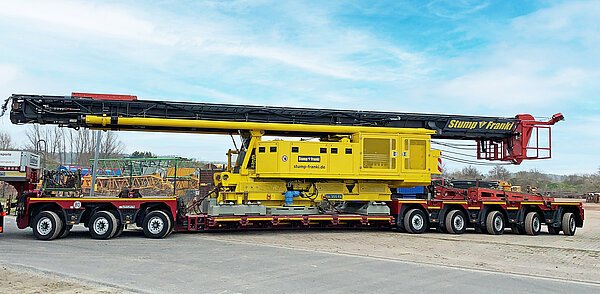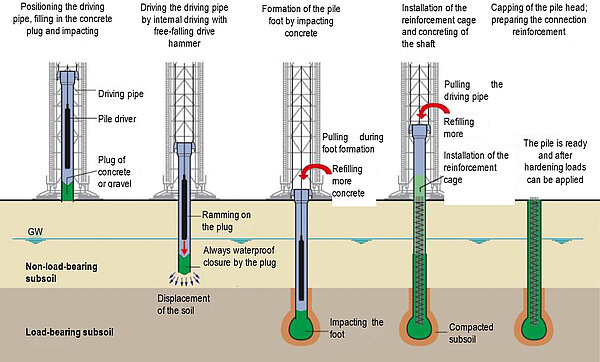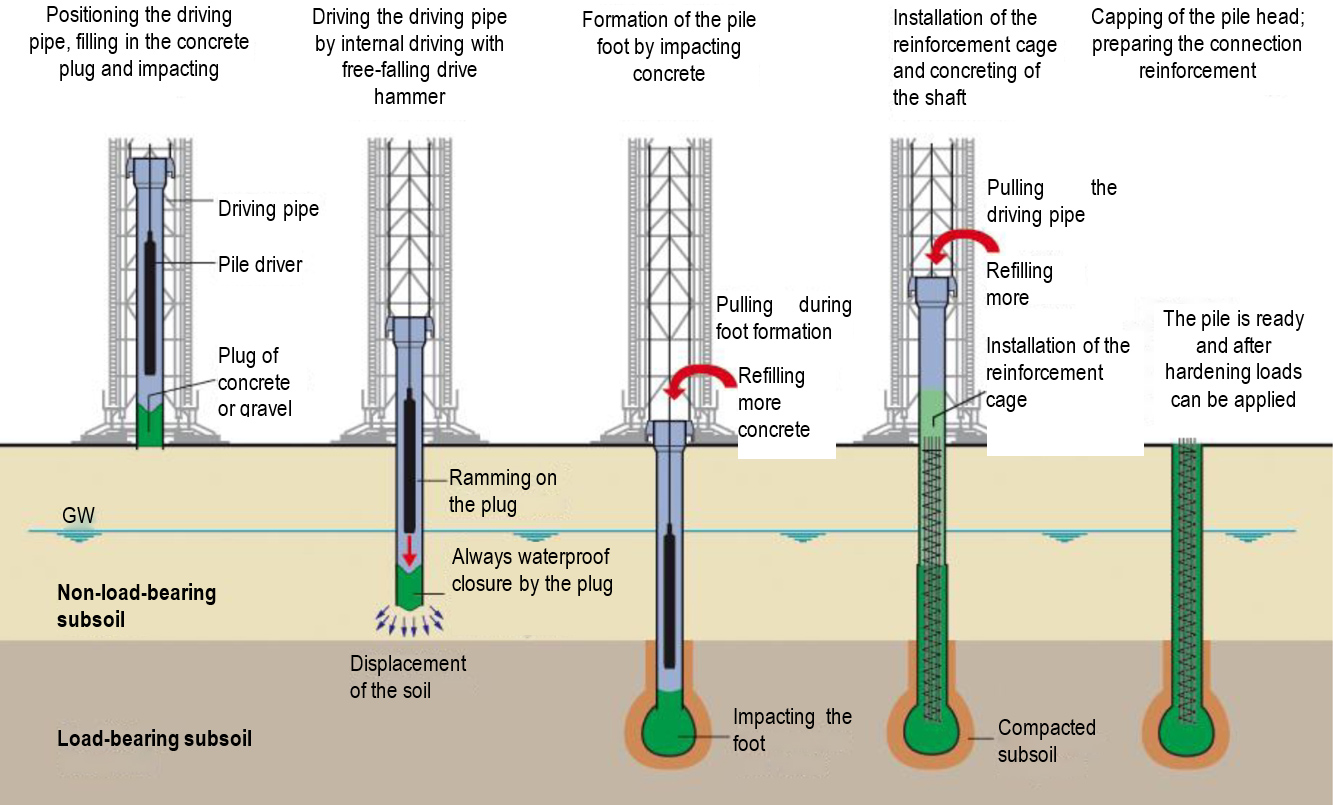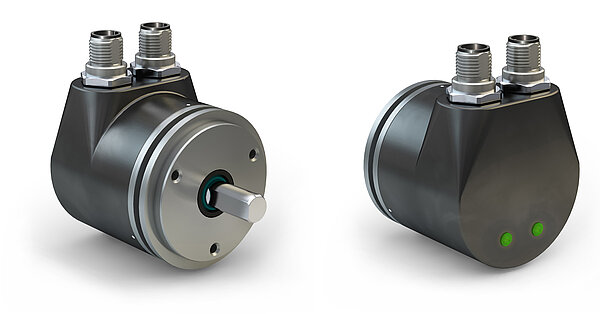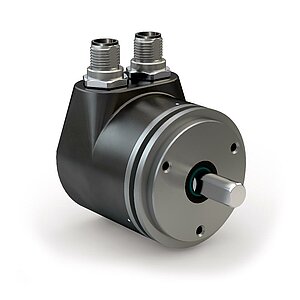Safety rotary encoders from SIKO for pile drivers in specialist civil engineering
The specialist civil engineering company Stump-Franki makes subsoil supportive for heavy structures such as football stadiums, highway bridges, shopping centers or wind turbines. For this purpose, it manufactures its own pile drivers, which are used to construct foundation piles. The piles are used to divert loads of the structure into deeper layers.
"We have our own mechanical engineering department to develop, design, assemble, commission and then use the equipment that suits us," explains Stefan Hemmerle, Head of Mechanical Engineering at Stump-Franki. Especially with the pile drivers, self-construction was the best option: Until the 1960s, the pile drivers could still be purchased in Belgium. Subsequently, Franki Germany began to manufacture its own machines such as the Franki rams and from the year 2000 also Atlas devices. "For us, this is a clear competitive advantage to build these machines according to our ideas, so that we can also use our own processes to the advantage of our customers," says Stefan Hemmerle.
The Franki pile driver has four winches installed at the top – including three SIKO rotary encoders for position monitoring. In the front area is the so-called leader, a frame to which the pile or driving pipe made of steel is attached, which is open at the top and bottom. A plug of concrete and gravel is filled into the driving pipe (1), and with the pile driver, a solid block of steel, the plug is compacted with very small blows (2). The pile driver is a free-fall system. Once the plug is firmly wedged in the pipe by the blows, the drop height is increased and the driving pipe is brought to the final depth in the load-bearing subsoil. Then the plug is impacted with the pile driver (3). The so-called Franki foot is formed, which acts like a dowel. After the foot has been fabricated, the reinforcement cage is adjusted and plastic concrete is refilled (4), so that a continuous pile is formed. After the concrete has hardened and the pile head (5) has been capped, the pile is ready to receive the load.
Monitoring of the four winches
The four winches have different tasks during the driving process: A winch is used to pull the driving pipe, a second is used to drive the pile driver, a bucket for filling with concrete and gravel is attached to the third, and finally there is an auxiliary winch via which a reinforcement cage is lifted in place. Three of the four winches are each monitored with a rotary encoder from SIKO, so that it is clear at all times where the pile driver, the auxiliary lift and the bucket are located. The auxiliary rope is a safety design to ensure that the pile driver shuts off before a hook passes through a rope pulley. This rotary encoder therefore has an end position point beyond which the winch must not continue to rotate. The pipe pulling winch is the most sensitive area of the system; despite the hard blows into the driving pipe, the position must be known at all times.
The rotary encoders are integrated into an automatic control system, which permanently queries the positions and thus also controls the tracking of the cable.
What is also important for our application is the absolute robustness. At the latest when the foot is impacted, on the one hand 240 tons are pulling on the pipe and at the same time the pile driver falls into the pipe with 6.5 tons. Practically the entire machine is jumping! The rotary encoders must be able to withstand this load – and they do.
Stefan Hemmerle, Head of Mechanical Engineering at Stump-Franki
Rotary encoders with safety performance level PLd
"What is most important to us is the precision of the position detection and the redundancy as a safety function of the rotary encoder," says Stefan Hemmerle. "As a multi-turn encoder, it can detect up to 4,096 revolutions of the winch in absolute terms; in addition, we have also integrated a gear ratio, so that we receive an enormous number of signals that enable us to permanently detect the position.“
Since failures of individual components can have serious effects in such an application with heavy equipment, the safety function of the rotary encoder with safety class PLd is decisive. It is completely redundant with two separate sensor circuits and thus ensures safe handling. In addition, it is an absolute encoder, which recognizes its position precisely even in the de-energized state and does not require reference travel. In this case, the integration into the controller takes place via a CANopen safety interface. "What is also important for our application is the absolute robustness. At the latest when the foot is impacted, on the one hand 240 tons are pulling on the pipe and at the same time the pile driver falls into the pipe with 6.5 tons. Practically the entire machine is jumping! The rotary encoders must be able to withstand this load – and they do.“ The magnetic measuring principle of the rotary encoders, which is ideally suited for use in harsh environments, also meets this requirement.
Foundation piles in case of poor soil and heavy load
Driving of foundation piles is necessary in the case of poor soil quality and particularly heavy structures. "The advantage of our Franki pile system is that it is a full displacement pile system. As a result, we have no excavated soil and do not have to dispose of anything,“ explains Stefan Hemmerle. "With the impacted foot, we can adapt to any soil. If it is not possible to drive particularly deep, we can simply impact the foot a little larger and compact it more strongly, thus giving the structure the necessary stability.“
In wind turbines, another parameter comes into play: the height of the wind turbine. For secure anchoring in the ground, inclined piles are necessary here, which can also be driven into the ground with the Franki pile driver together with the free-fall weight. 24 to 36 piles are anchored all around in the ground; two piles have an inclination that is directed outwards, one pile is inclined inwards. Thus, the piles are arranged alternately, since they must withstand both tension and pressure, depending on the direction of the wind.
Modular system for mobile machines
The SIKO rotary encoders meet the expectations of safety, precision and robustness that Stump-Franki requires for its applications. The WV58MR belongs to the "PURE.MOBILE sensor kit" from SIKO, which was developed exclusively for the high requirements of mobile machines and commercial vehicles. All sensors of this marking have the following features:
- available in single-channel or safe versions up to performance level d (PLd)
- protection classes up to IP6K9K
- extended temperature range: -40 to +85 °C (optional: +105 °C)
- high shock and vibration resistance
- expandable and configurable functions such as tilt, digital I/O thanks to PURE.MOBILE option cards
"Just do not change the robustness of the rotary encoders!", is Stefan Hemmerle's appeal to business partner SIKO, " These properties will continue to be indispensable for our applications in specialist civil engineering.“ With their measurement solutions for mobile machines, SIKO's sensor specialists have the right answer.
Author: Michaela Wassenberg - freelance journalist
Characters: 6,485, Characters with spaces: 7,505
